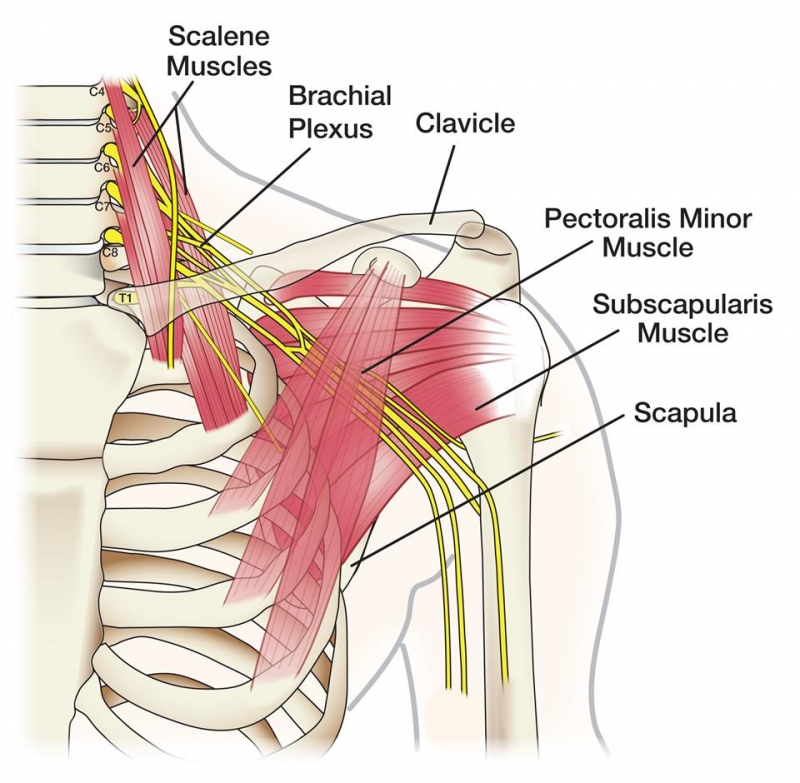
A Brachial Plexus Injury occurs when a network of nerves called the Brachial Plexus is stretched, compressed, ripped apart or torn away from the spinal cord. This network of nerves conducts the signal from the spinal cord to the shoulder, arm, and hand. Get help from Dr. Rajesh PAL an experienced physiotherapist who gives an effective Physiotherapy for Brachial Plexus Injury in Gurgaon.
Minor Brachial Plexus Injuries are called stingers or burners. They are quite common and keep occurring in contact sports like football. Sometimes, babies can sustain Brachial Plexus Injuries during birth. Some other conditions like inflammation or even tumors can affect the Brachial Plexus.
Brachial Plexus Injuries occurring due to auto or motorcycle accidents are generally the most severe. They can leave your arm paralyzed resulting in a total loss of function and sensation. Further, Brachial Plexus Injury can be classified into two types namely traumatic and obstetrics.
A variety of factors can be responsible for Brachial Plexus Injury. Some of the most prominent factors are -
The lower nerves are more vulnerable to injury as the arm of the patient is forced above the head.
The signs and symptoms of Brachial Plexus Injury vary from patient to patient. Some of the most commonly reported symptoms are -
Some minor damages can occur during contact sports of the sort of football or wrestling. As the Brachial Plexus Nerves get stretched or compressed, it results in Brachial Plexus Injury. These are known as stingers or burners. The symptoms of stingers usually last only a few seconds or minutes. However, these can linger for days or longer in some patients.
Brachial Plexus Injuries are known to cause permanent weakness or disability in some cases. Even if the symptoms and the case, in general, seems minor and insignificant, the patient must seek medical care. In case, you have the following symptoms, you must see a doctor at the earliest -
The diagnosis of Brachial Plexus Injury begins with the doctor reviewing your symptoms and conducting a physical examination to further analyze the same.
The doctor may also conduct tests like Electromyography, Nerve Conduction Studies, Magnetic Resonance Imaging and Computerized Tomography (CT) Myelography to deeply analyze the extent and severity of the situation. This gives some serious leads about how well the nerve is functioning and what the extent of the injury is. This test is generally performed when MRIs don't provide the required information for diagnosis.
In a majority of the cases, the presence or absence of the disorder is confirmed by an EMG examination. This takes almost 5 to 7 days. The proof of denervation is evident.
If no nerve conduction is detected after 72 hours of the injury, then avulsion is most likely. Out of all the test techniques and methods, MR imaging of the Brachial Plexus is the most advanced diagnostic technique. It uses a high Tesla MRI scanner like 1.5 T or more. Magnetic Resonance helps in the assessment of the injuries in the specific context of site, extent and the nerve roots involved to quite a high degree of accuracy. In addition, examination of the cervical cord and post-traumatic changes in soft tissues can also be monitored and even visualized.
The best physiotherapy treatment for Brachial Plexus Injury is a routine of physiotherapy. The patient must consult a qualified physiotherapist to get a proper Brachial Plexus Injury treatment in Gurgaon . One of the major goals of rehabilitation is to prevent muscle atrophy until the nerves regain function.
Electrical stimulation is another effective treatment to help patients recover. Exercises that generally involve the following are recommended -
These are known to facilitate the process of healing by engaging the nerves in the damaged sites as well as improving muscle function. Stretching must be done by the patients on a daily basis. It helps them improve or maintain a respectable range of motion. It is also crucial in order to rehabilitate. It not only increases the flow of blood to the injury but also facilitates the proper functioning of nerves. The treatment involves acupuncture, TENS, passive movements, exercise therapy, biofeedback, compression garments, and advice and massage therapy. The aim is to control pain, maintain ROM, strengthen the affected muscles and manage chronic oedema.
The main aim of physiotherapy for Brachial Plexus Injury is to maintain the range of motion of the extremity. It focuses on strengthening the remaining functional muscles and managing pain.
